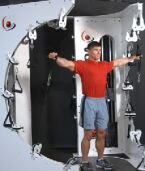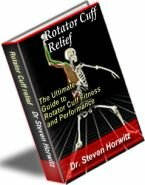Backpack Safety
Is carrying a heavy backpack to school causing back pain for your kids? There is a good chance that it does or it will if the answer to any of the questions below is yes:
- Does your child complain of back pain?
- Does he walk bent over sideways to try to adjust for the heavy load of a backpack?
- Does he complain of numbness and tingling in his arms or hands?
- Does he carry more than 15-20% of her body weight in his backpack?
Here are the facts:
Fact: There has been a 330 percent increase in backpack-related injuries among school-age children in America since 1996.
Fact: Students lift and carry nearly 11 tons in their backpacks in a single school year. Twelve pounds in an average child's backpack X 10 lifts per day = 120 pounds Per day X 180 school days per year = 21,600 pounds lifted in one school year. That's nearly 11 tons of weight; the equivalent of six mid-sized automobiles!
Fact: Many students have no lockers or access to their lockers to relieve the load.
Fact: Most school districts are doing little or nothing to address this growing problem.
Fact: The Consumer Product Safety Commission estimates that 4,928 emergency room visits each year result from injuries related to book bags and back carriers.
More than 40 million students in the United States carry school backpacks. More than 7,000 emergency room visits in 2001 were related to backpacks and book bags, and approximately half of those injuries occurred in children 5 to 14 years old.
Research reveals an alarming danger associated with childhood backpack use. This research stems from the increasing number of reports of childhood back pain in recent decades. By the end of their teen years, more than 50% of youths experience at least one low back pain episode (Spine 1998; 23:228-34). Hauling a heavy backpack over one shoulder day after day may provoke serious spinal and postural problems. A 1999 study found that restricted mobility and movement of the vertebrae (spinal bones) was a risk factor for back pain (Surg Radiol Anat 1999; 21:109-13). A study which used magnetic resonance imaging (MRI) to examine the intervertebral discs of the spine showed that backpacks can alter the fluid content of these discs, a risk factor for disc herniation ("slipped disc") and osteoarthritis (Spine 1999; 15:1015-22).
Recently, researchers at the University of California in Riverside studied 3,500 students aged 11 to 15 at four middle schools in Riverside and San Bernardino counties. Researchers weighed the children's backpacks and asked them how often they used their backpacks and how much pain, if any, they felt as a result.
64% of the students reported having back pain at some time. Two of every five children said they felt pain while wearing their backpacks. Among the students who reported pain, about 12% said it was "not bad," while almost 90% said their back pain was "bad" or "very bad." 21% said their pain lasted more than six months. About 16% said they had missed school, gym class, or after-school sports because of the pain, and almost 17% said they had seen a doctor for their back pain. Most students with back pain said the pain was recurrent.
Siambanes, D. Journal of Pediatric Orthopedics, March/April 2004; vol 24: pp 211-271. News release, University of California, Riverside.
Here are some Backpack safety tips that will decrease the chance of injury:
- Use a rolling pack instead of a backpack.
- Limit the weight of the backpack to 15% of the child's body weight (Spine. 29(19):2184-2190).
- Choose a backpack with wide, padded shoulder straps AND a waste belt.
- The backpack should rest between or below the shoulder blades. It should not go below the waist.
- Wear backpacks on both shoulders. Avoid single strap packs. Wearing both straps distributes the weight load evenly so well aligned posture is encouraged and facilitated.
- Pull the shoulder straps snug enough to prevent the pack from flopping around while walking. Make sure the backpack is in the center of the back.
- Place heavier books closest to the back of the pack.
- Watch body mechanics putting on and taking off the backpack. Swinging the weight to get the backpack on is a sign it is too heavy. Bend your hips and knees when lifting the backpack.
- Keep a second set of schoolbooks at home.
- Carry only what's necessary each day.
- Start your child on a proper exercise program. Do not assume that your child can carry a backpack and have no problems, especially if he/she is sedentary.
- Have your child evaluated by your chiropractor for scoliosis and if your child has any pain.
Although back pain is becoming more common in older adolescents, it is not as common in younger children and may be a sign of a more serious problem, such as spondylolysis, spondylolisthesis, disk herniation, discitis, a sport's injury, or a tumor or infection. Do not assume that your child's back pain is caused by a heavy backpack, especially if the pain is very severe or persistent or if it lingers even after you lighten your child's backpack load.

BACKPACK SIZING
To find your torso length, have a measure your child's back along the spine from the level of your iliac crest (the top of your hipbones) to your C7 (the knobby bone at the base of your neck).

Backpack is too low

Backpack is on one shoulder

Properly fitting backpack
|
The Ultimate Nutritional Lie Detector Test LEARN MORE 
|
Kettlebell Rehab

Click Here
To See How Kettlebells will transform your body!
Vortex Rehab

Click Here
To See How This
Revolutionary Machine
Can Help You!
Partner / Support

Loans up to 3 months - fast cash advances for up to 90 days and up to $5,000!


















